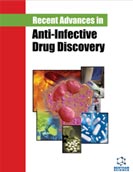Abstract
Luliconazole is a broad-spectrum antifungal agent with impactful fungicidal and fungistatic activity. It has shown exceptional potency against miscellaneous fungal strains like Candida, Aspergillus, Malassezia, Fusarium species and various dermatophytes. Luliconazole belongs to class II of the Biopharmaceutical Classification System with low aqueous solubility. Although it is available conventionally as 1% w/v topical cream, it has limitations of lower skin permeation and shorter skin retention. Therefore, nanoformulations based on various polymers and nanostructure carriers can be employed to overcome the impediments regarding topical delivery and efficacy of luliconazole. In this review, we have tried to provide insight into the literature gathered from authentic web resources and research articles regarding recent research conducted on the subject of formulation development, patents, and future research requisites of luliconazole. Nanoformulations can play a fundamental role in improving topical delivery by escalating dermal localization and skin penetration. Fabricating luliconazole into nanoformulations can overcome the drawbacks and can efficiently enhance its antimycotic activity. It has been concluded that luliconazole has exceptional potential in the treatment of various fungal infections, and therefore, it should be exploited to its maximum for its innovative application in the field of mycology.
Keywords: Luliconazole, antifungal, nanoformulations, topical, fungi, mycology.
Graphical Abstract
[http://dx.doi.org/10.3201/eid1709.101987] [PMID: 21888792]
[http://dx.doi.org/10.1016/S0140-6736(04)17107-9] [PMID: 15451228]
[http://dx.doi.org/10.1007/978-1-4939-6515-1_2] [PMID: 27837497]
[http://dx.doi.org/10.1016/j.molliq.2013.01.008]
[http://dx.doi.org/10.4103/0378-6323.162328] [PMID: 26261140]
[PMID: 32494352]
[http://dx.doi.org/10.1080/08982104.2019.1682602] [PMID: 31631734]
[http://dx.doi.org/10.1111/j.1439-0507.2006.01305.x] [PMID: 17302746]
[http://dx.doi.org/10.2147/CE.S49629] [PMID: 25285056]
[http://dx.doi.org/10.1007/s10156-004-0327-1] [PMID: 15365862]
[http://dx.doi.org/10.1016/j.heliyon.2019.e01688]
[http://dx.doi.org/10.1016/j.heliyon.2019.e01688] [PMID: 31193099]
[http://dx.doi.org/10.1016/j.mcat.2021.111639]
[http://dx.doi.org/10.1007/s11046-008-9109-0] [PMID: 18478357]
[http://dx.doi.org/10.1136/bmj.e4380] [PMID: 22782730]
[PMID: 24385117]
[http://dx.doi.org/10.4103/0019-5154.105284] [PMID: 23372210]
[PMID: 23763082]
[http://dx.doi.org/10.9734/BJPR/2013/4348]
[http://dx.doi.org/10.1093/mmy/myw016] [PMID: 27118804]
[http://dx.doi.org/10.1128/AAC.02706-13] [PMID: 24709260]
[http://dx.doi.org/10.1111/myc.13289] [PMID: 33884673]
[http://dx.doi.org/10.1093/mmy/myaa111] [PMID: 33539539]
[http://dx.doi.org/10.1093/cid/civ933] [PMID: 26679628]
[http://dx.doi.org/10.1016/j.mycmed.2017.11.004] [PMID: 29198426]
[http://dx.doi.org/10.1007/s10156-006-0440-4] [PMID: 16826352]
[http://dx.doi.org/10.1016/S0924-8579(99)00076-X] [PMID: 10461840]
[http://dx.doi.org/10.5812/jjm.115902]
[PMID: 32148683]
[http://dx.doi.org/10.1016/j.mycmed.2017.04.011] [PMID: 28483449]
[http://dx.doi.org/10.1128/AAC.01193-16] [PMID: 27572389]
[http://dx.doi.org/10.1111/1346-8138.12700] [PMID: 25736318]
[PMID: 19437895]
[http://dx.doi.org/10.1093/mmy/myz128] [PMID: 31873751]
[http://dx.doi.org/10.1007/s11046-015-9960-8] [PMID: 26541869]
[http://dx.doi.org/10.1111/j.1470-9465.2004.00845.x] [PMID: 14748803]
[http://dx.doi.org/10.1007/s00430-020-00672-4] [PMID: 32253502]
[http://dx.doi.org/10.1097/ICO.0000000000001812] [PMID: 30422866]
[http://dx.doi.org/10.1007/s40005-015-0209-9]
[http://dx.doi.org/10.1007/s00289-020-03220-5]
[http://dx.doi.org/10.1016/j.chemphyslip.2020.105028] [PMID: 33309940]
[http://dx.doi.org/10.1080/00914037.2021.1879077]
[http://dx.doi.org/10.3390/pharmaceutics13070977] [PMID: 34203359]
[http://dx.doi.org/10.1016/j.sjbs.2020.10.005] [PMID: 33424312]
























